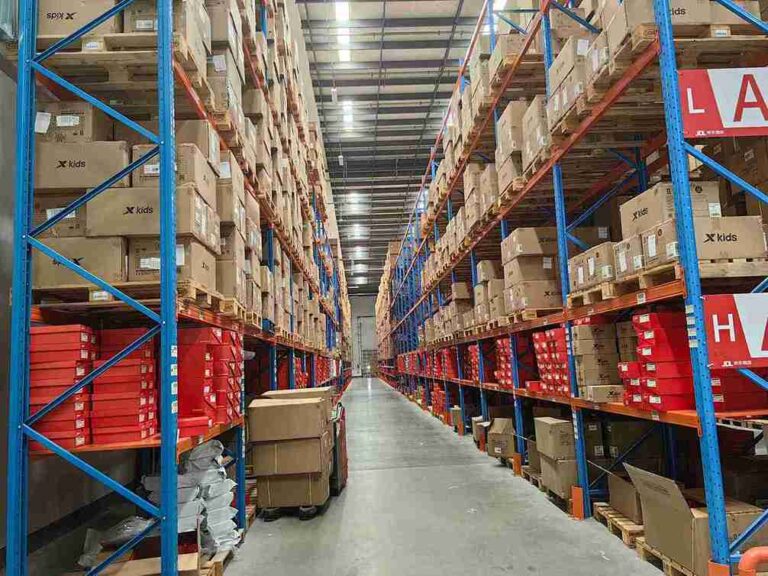📐 "First 50 Enterprise Queries Get Custom 3D Warehouse Design" Plan

Introduction: Why a Proper Warehouse Racking Setup Checklist Matters
Every warehouse manager knows that an optimized warehouse racking setup checklist isn’t just about stacking shelves—it’s about maximizing space, enhancing safety, and boosting operational efficiency. A poorly executed warehouse racking setup leads to wasted space, damaged inventory, and even workplace injuries.
This comprehensive warehouse racking setup checklist provides a step-by-step blueprint for designing, installing, and maintaining a high-performance storage system. Whether setting up a new facility or optimizing an existing one, following this warehouse racking setup checklist ensures cost-effective, scalable, and OSHA-compliant storage solutions.

1. Pre-Installation Planning: The Foundation of a Successful Warehouse Racking Setup
Before bolting down a single beam, a well-structured warehouse racking setup checklist requires thorough planning. Skipping this phase leads to inefficient layouts, overloaded racks, and safety violations.
1.1 Warehouse Space Assessment
- Measure floor dimensions, ceiling height, and column spacing to determine racking capacity.
- Identify obstructions (HVAC, sprinklers, electrical panels) that impact the warehouse racking setup.
- Plan for future expansion—will the current warehouse racking setup accommodate growth?
1.2 Inventory & Storage Needs Analysis
- What’s being stored? Pallets, cartons, or long items like lumber?
- Weight distribution: A warehouse racking setup checklist must account for load capacities per shelf.
- Accessibility requirements: Will workers need selective pallet racking, drive-in racks, or push-back systems?
1.3 Selecting the Right Racking System
A warehouse racking setup checklist must match the system to the inventory:
- Selective Pallet Racking – Best for high-SKU warehouses needing frequent access.
- Drive-In/Drive-Thru Racking – Ideal for high-density storage of uniform pallets.
- Cantilever Racking – Perfect for long, bulky items like pipes or furniture.
- Push-Back Racking – Maximizes space with a LIFO (Last-In, First-Out) system.
2. Warehouse Layout Design: Optimizing Space & Workflow
A well-designed warehouse racking setup checklist ensures smooth operations, minimized travel time, and maximized storage density.
2.1 Aisle Width Optimization
- Narrow aisles (8-10 ft) require specialized forklifts but increase storage by 30%.
- Wide aisles (12-14 ft) allow standard forklifts but reduce storage efficiency.
2.2 ABC Slotting Strategy
- A-Items (High Turnover) – Place near shipping docks for quick access.
- B-Items (Medium Turnover) – Store in mid-level racks.
- C-Items (Low Turnover) – Place in high or deep storage zones.
2.3 Vertical Space Utilization
- Mezzanine floors double storage without expanding the footprint.
- Automated Storage & Retrieval Systems (AS/RS) boost efficiency in high-volume warehouses.
3. Warehouse Racking Installation: Step-by-Step Execution
A proper warehouse racking setup checklist ensures stable, safe, and long-lasting installations.
3.1 Floor Preparation & Anchoring
- Level & reinforce concrete floors to prevent racking instability.
- Use epoxy anchors or concrete bolts for secure anchoring.
3.2 Rack Assembly Best Practices
- Follow manufacturer guidelines for beam spacing and upright alignment.
- Install wire decking and safety pins to prevent pallet slippage.
3.3 Load Testing & Structural Verification
- Gradually increase weight to test beam deflection and upright stability.
- Check for misalignments or weak points before full operation.
4. Warehouse Racking Safety & Compliance: Avoiding Costly Mistakes
A comprehensive warehouse racking setup checklist must include safety protocols to prevent catastrophic failures.
4.1 OSHA & RMI Compliance Standards
- OSHA 1910.176(b) mandates safe load distribution and clear aisle markings.
- RMI (Rack Manufacturers Institute) provides engineering specifications for safe racking setups.
4.2 Inspection & Maintenance Schedule
- Daily Checks: Look for bent beams, loose bolts, or overloaded shelves.
- Annual Professional Inspections: Detect hidden structural damage.
4.3 Employee Training & Best Practices
- Train staff on proper loading techniques and forklift safety.
- Enforce weight limits and no modifications without approval.
5. Common Warehouse Racking Setup Mistakes & How to Fix Them
Even with a detailed warehouse racking setup checklist, mistakes happen. Here’s how to avoid them.
5.1 Overloading Racks Beyond Capacity
- Solution: Label maximum load limits and enforce strict compliance.
5.2 Incorrect Beam Spacing
- Solution: Follow manufacturer spacing charts for optimal weight distribution.
5.3 Ignoring Future Scalability
- Solution: Design a modular warehouse racking setup that adapts to growth.
6. Advanced Warehouse Racking Optimization Strategies
Beyond the basics, a high-performance warehouse racking setup checklist includes cutting-edge techniques.
6.1 Automated Storage & Retrieval Systems (AS/RS)
- Robotic pallet shuttles and automated cranes maximize efficiency.
6.2 Dynamic Slotting with WMS Integration
- Warehouse Management Software (WMS) adjusts storage locations in real-time.
6.3 Sustainable Racking Solutions
- Recycled steel racks and energy-efficient AS/RS reduce environmental impact.
Conclusion: The Ultimate Warehouse Racking Setup Checklist for Success
A well-executed warehouse racking setup checklist is the backbone of efficient, safe, and cost-effective storage operations. By following this detailed guide, warehouse managers can:
✅ Maximize storage space with optimized layouts.
✅ Ensure OSHA compliance and prevent accidents.
✅ Scale operations without costly reconfigurations.
Regular inspections, employee training, and smart design choices keep warehouses running at peak performance.
FAQs: Warehouse Racking Setup Checklist Clarified
1. How often should a warehouse racking setup be inspected?
- Daily visual checks by staff and annual professional inspections are mandatory.
2. What’s the best racking system for small warehouses?
- Selective pallet racking offers flexibility, while push-back racking maximizes space.
3. Can different racking systems be combined in one warehouse?
- Yes, hybrid setups (e.g., pallet racks + cantilever racks) optimize diverse storage needs.
4. How is load capacity calculated in a warehouse racking setup?
- Refer to manufacturer specs and include a 20% safety margin.
5. What’s the average lifespan of a warehouse racking system?
- With proper maintenance, steel racking lasts 20+ years.




